Beavers are being reintroduced to counties across the UK after 400 years of extinction. As a keystone species, they will modify the environment around them, support other animals and reduce the risk of floods.
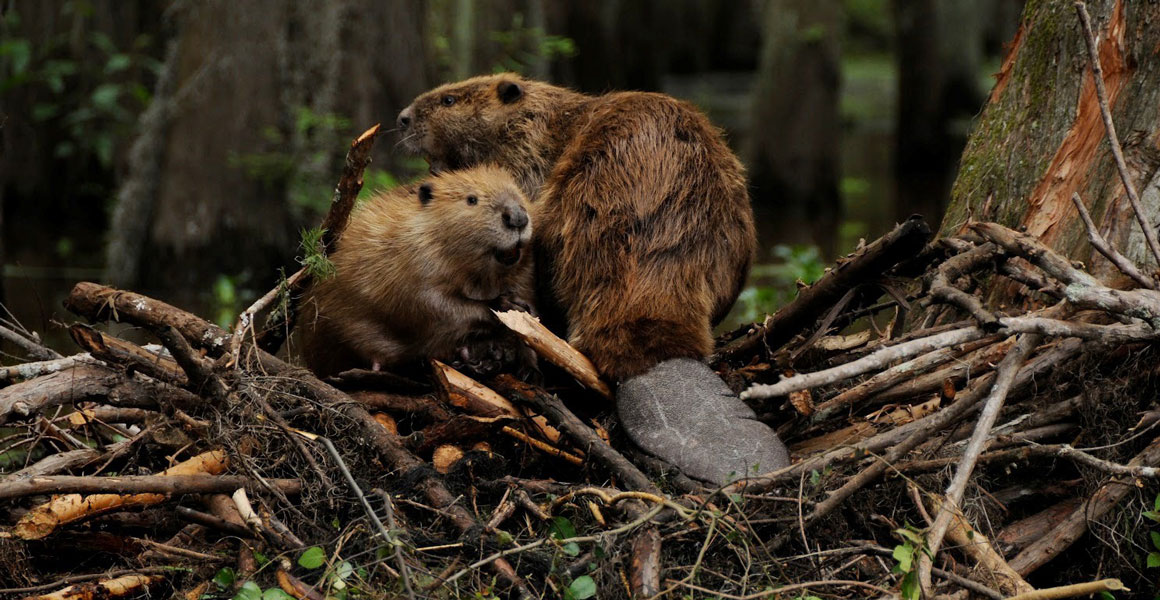
Beavers mate for life and live with their offspring in lodges. A female gives birth to 2-4 babies - known as kits - every year. Once they're old enough, the young help the parents repair the dam and lodge, and take care of newly born kits.
Beavers are large, semiaquatic rodents native to the northern hemisphere. They once thrived in Eurasia but were heavily hunted for their fur, scent sacs and meat. By the sixteenth century, they became extinct in many countries, including the UK.
Beavers are a keystone species, which means their presence is good for nature in the areas they live. These architects change their environment to suit their needs - in doing so, they create complex wetland habitats for many other species.
With the constant threat of climate change, conservationists are keen to find new, natural and cost-efficient ways of mitigating environmental disasters. Beavers could be the answer.
Earlier this year, beavers were introduced to the South Downs, and more releases are being planned in Dorset, Derbyshire, the Isle of Wight, Nottinghamshire and Montgomeryshire.
Derek Crawley, lead author of the Mammal Society's Atlas of the Mammals of Great Britain and Northern Ireland, says, 'While the impact of beaver extinction wasn't noted because we weren't aware of their true value hundreds of years ago, bringing them back will change the landscape as we know it. Beavers bring many ecosystems together and that will offer a wider range of ecological services.'
How can beavers us help fight climate change?
A beaver's most distinct feature is perhaps the pair of elongated orange teeth which never stop growing. The strong incisors are coated in an iron-rich protective enamel and used for gnawing at tree trunks.
Beavers will eat the bark, twigs and leaves of trees, while breaking larger branches into smaller pieces to build dams and lodges.
Dams are often built on rivers. Deep bodies of water are created on one side, establishing suitable environments for building a lodge - a safe haven for beaver families, which can only be accessed via secret underwater entrances.
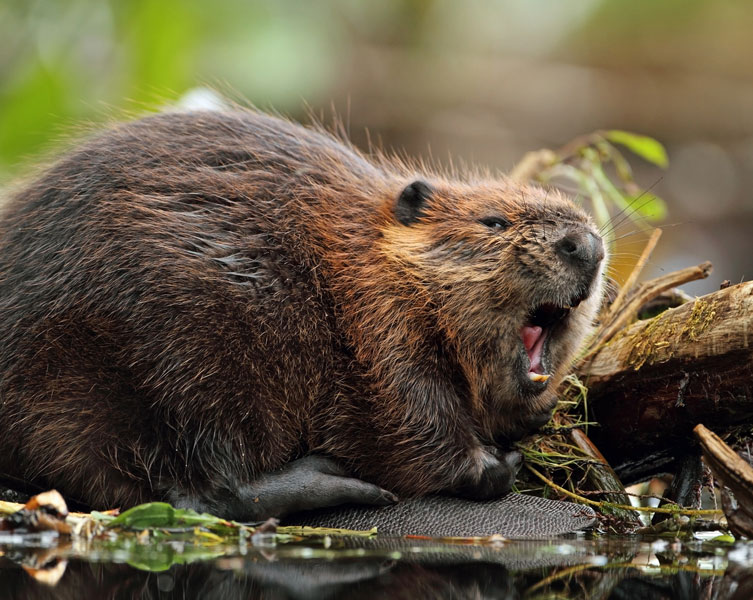
There are two species of beavers: Eurasian and North American. They are the second-largest rodents in the world, after the capybara.
Beaver dams double as an invaluable tool for filtering and cleaning water, as well as creating a healthy environment bursting with life.
'Straight river and streams tend to be fast-flowing resulting in limited available habitats and wildlife,' explains Derek.
'When a beaver creates a dam, it floods the area behind it, creating a pond. This also slows the motion of water and prevents sediments from flowing downstream, leaving the lowland water clear.
Both environments offer different conditions that support a wide variety of species and allows them to thrive.'
Dams decrease the impacts of floods by up to 60% by reducing water flow. The same mechanism is also a solution for drought periods where water in pools can be utilised. Both are helpful for many towns and cities which are prone to floods and droughts.
Another huge benefit of beaver dams and pools is their ability to capture carbon. The dams hold back silt, which locks up carbon and new plant growth in the surrounding area and forms a carbon sink.
Native trees such as willow or alder evolved alongside beavers for millions of years. When gnawed on by beavers, they quickly regrow from felled stems or cuttings. This process thins trees and allows space for other plants to grow in the area, creating a rich and diverse ecosystem.
The woody debris is also home to over 2,000 species of invertebrates, many of which are food sources for freshwater animals, shelter for fish to hide from avian predators and perches for birds to rest on.
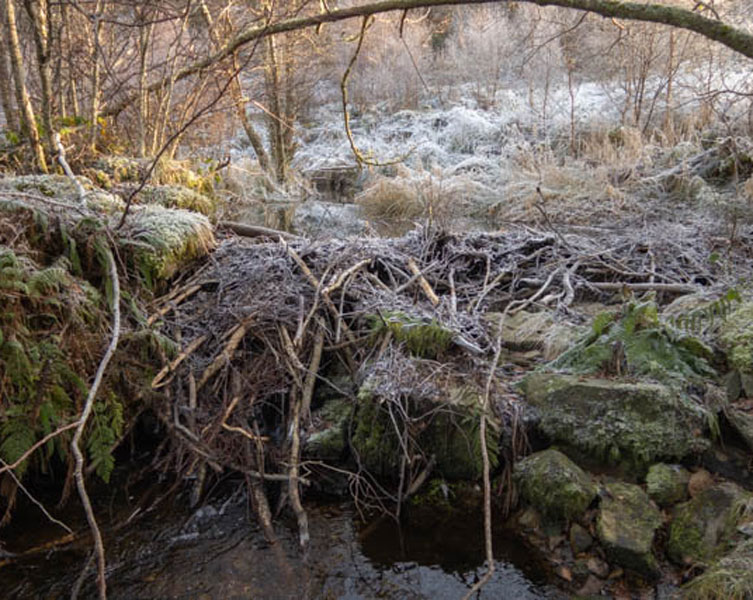
Beaver dams can cause flooding in unwanted areas such as nearby crop fields. However, there are ways of adjusting the dams to manage water flow, such as inserting a large but discreet pipe. © Patrick Mackie/Geograph (CC BY-SA 2.0).
Rewilding Britain with beavers
Beavers are slowly returning to Britain.
In 2001, a group of up to 200 wild beavers were discovered on the River Tay, Scotland's longest river.
Several wildlife organisations worked together and established the Scottish Beaver Trial in 2009, to introduce and monitor a wild beaver family for five years.
Following the results, the Scottish government proclaimed beavers a native species and offered them a European Protected Species status.
In March 2011, a pair of juveniles were released into a three-hectare fenced enclosure on private land in northern Devon. This was so they could restore a nationally important wet grassland area.
In 2013, three wild beavers were spotted on the River Otter in Devon - the first time in England in over 400 years.
However, due to their lengthy absence, beavers were not considered a native species in England, and the government planned to capture and place them in a zoo or wildlife park. This was met with passionate resistance from local residents and campaign groups which made the government reconsider.
A couple of years later, Natural England announced the beavers could stay as long as they were of Eurasian descent and disease-free, which they were. There have since been many research projects involving controlled releases throughout England, Scotland and Wales, to find out how beavers will impact the environment.
In 2014, wild beavers were discovered in east Devon, which led to a five-year monitoring programme called the River Otter Beaver Trial.
During the summer of 2017, beavers were introduced to fenced areas in Cornwall, to enhance wildlife habitats and help with cleaning water and frequent flooding.
Beavers were released in Hatchmere Nature Reserve in 2020 as part of a five-year plan to restore valuable wetland systems. Another pair were released in March 2021 in the South Downs, a region of chalky hills in southeastern coastal counties of England, and two more in an enclosed area in Dorset.
The latest beaver release, also in March 2021, included an adult and its offspring at Cors Dyfi Nature Reserve in Powys, Wales. Many more releases are on the horizon.
Beavers will help enhance these locations in a variety of ways, such as grazing to prevent trees and shrubs invading wetland areas and boosting eco-tourism.
Derek says, 'If we want to explore rewilding and letting nature take its own course, then beavers are the ideal creatures to demonstrate the process. As they landscape their environment to their needs, the result is a much more diverse set of wetland habitats than the ones we currently have.'
The Wildlife Trusts have led on many of the beaver introductions across the country.
Craig Bennett, chief executive of The Wildlife Trusts says, 'Beavers are a fantastic keystone species that have a hugely important role to play in restoring nature to Britain. It’s brilliant to see Wildlife Trusts across the UK ensuring a better future for wetlands and for a wealth of other wildlife by bringing back beavers whose engineering capabilities inject new life into wild places. The benefits for people are clear – beavers help stop flooding downstream, filter out impurities and they create new homes for otters, water voles and kingfishers. What’s more, people love seeing them and their presence boosts tourism in the countryside.
'We live in one of the most nature‐depleted countries in the world which is why we have a big ambition to protect 30% of land and sea for nature by 2030. We’re calling on the government to come up with an ambitious strategy to enable beavers to return to help tackle the climate crisis and improve wetlands for wildlife.'
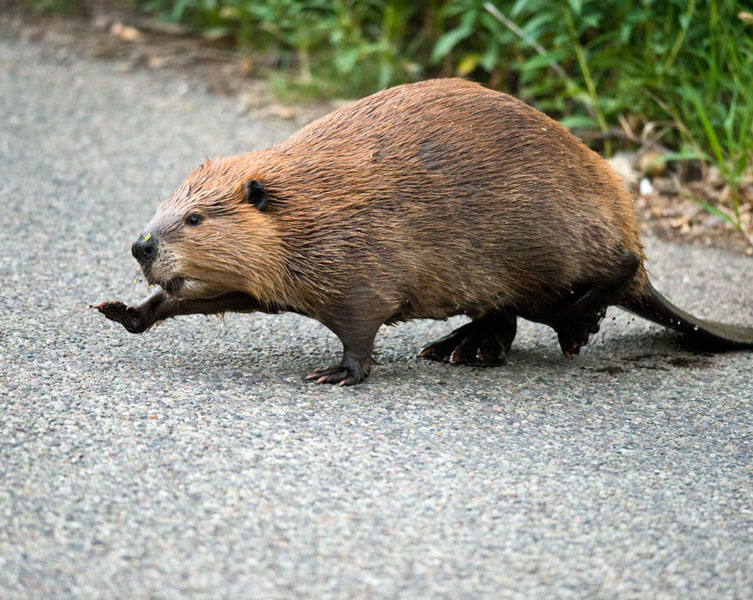
Beavers were previously hunted to extinction in the UK for their thick fur, which was used for quality hats and coats. Their castoreum, a musk-like substance in the scent gland, was used for medicines and perfumes. © Neil Sasaki/Flickr (CC BY-NC 2.0).
How can we live peacefully with beavers?
Naturally, there are some concerns from people such as farmers and those invested in fisheries about beavers returning to the UK. However, research shows that humans can live harmoniously with beavers if we manage the situation well.
The Cornwall Beaver Project, organised by the Cornwall Wildlife Trust, explores how beavers affect water and wildlife, and how conflicts with humans may be resolved.
Researchers visited Bavaria in southeast Germany, where beavers had returned for 50 years. There, the local people were educated on different ways they could solve typical problems.
For example, undesirable tree felling was solved simply by sandpainting the trunks or wrapping a wire mesh around it. Unwanted floods were assuaged by adding a flow device which allowed some water to pass through. These simple solutions allowed humans and beavers to share the same space amicably.
The Bavarian district of Winzer had faced many floods, leading to the government planning a dam costing more than a million euros. But around the same time, a group of beavers had moved in upstream and started building their own dam. This slowed down the flow of water, reducing the impact of floods and saving the town more than 650,000 euros.
This is a perfect example of how beavers can help mitigate climate change disasters in a natural and economical way.
Contrary to popular belief, beavers do not eat fish. In fact, ponds and channels created by the herbivores sustain fish and other water species by offering habitats (including breeding and nursery grounds) and refuges during drought conditions.
Beavers may be a nuisance at times, but they enhance wildlife and landscapes, and limit environmental disasters in a natural, sustainable and cost-effective way.
They also provide the simple joy of seeing such unique and elusive mammals, encouraging people to interact with and appreciate nature.
We need beavers for a healthier and safer future. With the right knowledge and planning, we can work with these efficient and charismatic creatures to enrich the UK.



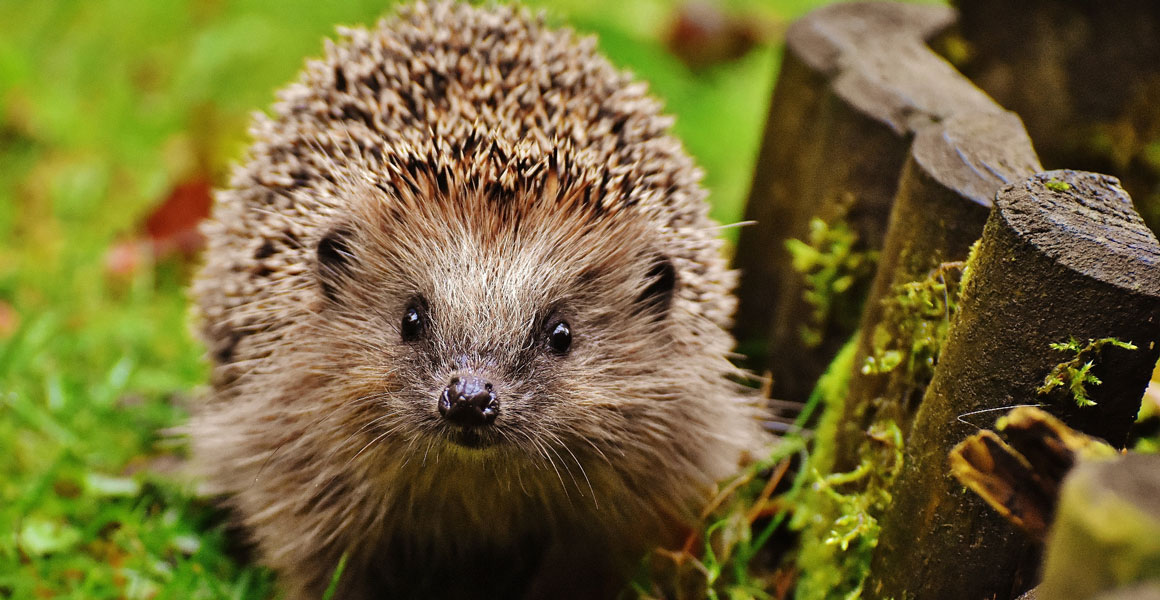
Don't miss a thing
Receive email updates about our news, science, exhibitions, events, products, services and fundraising activities. We may occasionally include third-party content from our corporate partners and other museums. We will not share your personal details with these third parties. You must be over the age of 13. Privacy notice.
Follow us on social media